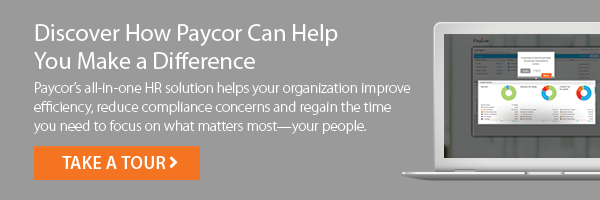The EEOC has not yet announced the official opening date for the 2024 EEO-1 Component 1 data collection. Over the past few years, the date has ranged from April to October, sometimes with last-minute delays.
It’s important to keep track of these timelines, especially since they may be announced at any point in the year. We’ll keep you posted as we find out more about 2025’s important reporting deadlines.
Need a refresher on EEO-1 reporting in the meantime? We’ve got you covered.
EEO-1 Reporting in 2025: Who’s Required to File?
The following types of organizations are required by federal law to categorize employment data by race, ethnicity, gender, and job category. They must submit that data in annual EEO-1 reports.
- All private employers with 100 or more employees
- All federal contractors and first-tier subcontractors with 50 or more employees
- All federal contractors holding a contract of $50,000 or more
- Federal government contractors serving as depositories of government funds
- Financial institutions that serve as issuing and paying agents for U.S. Savings Bonds and Savings Notes in any amount
What is the EEO-1 Report?
The EEO-1 report is a way for the government to review your company’s employment practices and patterns. They use this data to identify any potential workplace discrimination. The EEOC and the Office of Federal Contract Compliance Programs (OFCCP) review the EEO-1 report to determine which employers should be further evaluated for any compliance violations.
What’s the Purpose of the EEO-1 Report?
EEO-1 Component 1 data relates to job categories sorted by race, ethnicity, and sex. EEO-1 Component 2 data requires employers to include the hours employees work and pay information from their W-2 forms by race, ethnicity, and gender within 12 pay bands.
Though EEO-1 Component 2 data for 2017 and 2018 was collected, The EEOC voted to discontinue the EEO-1 Component 2 pay data collection in the future in 2019. However, the EEOC’s Spring 2024 Unified Agenda suggests the organization plans to issue a proposed rule regarding pay data collection in January 2025.
What is the Deadline for EEO-1 Reporting?
The deadlines for covered employers to report 2024 data have not yet been announced. In the past few years, reporting has opened between April and October.
Since 2018, it’s been hard to predict annual EEO-1 reporting deadlines. For over 50 years before that, employers were required to submit the EEO-1 report by September 30 of each year. In 2018, that date changed to March 31. In 2019 and 2020, the deadline was delayed until October 25. The deadline for 2021 filing was April 12, but the filing window for 2022 data didn’t open until October 31, 2023. In 2024, the data collection window opened April 30 and closed July 9. Employers should ready their data early if possible, and prepare for the window to open at any point.
California Pay Data Reporting
In September 2022, California passed Senate Bill 1162 (or SB112) which expanded the requirements for annual pay data reports. Its main purpose is to reinforce pay transparency and counter workplace discrimination. SB1162 requires covered employers (with 15 or more employees) to publish pay scales with job postings and retain certain pay records. The California law aligns with established laws in several other states, including Washington, New York, Nevada, Colorado, Maryland, and Connecticut.
This law builds upon the previous Senate Bill 973, which required California employers with 100 or more employees to file pay data reporting by race and gender to the California Department of Fair Employment and Housing by May 10, 2023. Senate Bill 1162 requires employers who hired 100 or more labor contractors to file a separate report identifying those workers. The labor contractors must also provide pay data to the reporting employers.
These laws are complex at best, and they change all the time. They’re also slightly different in every U.S. state. Our system is set up to make reporting as simple as possible for businesses around the country.
How Paycor Helps
To effectively manage EEO-1 reporting requirements, organizations will need an HR, payroll, and time solution that provides an efficient and accurate way to access employee data—especially since the reporting window is a moving target.
Paycor’s HCM platform offers a unified experience with HR, time, and payroll data easily accessible in one location. Our solution not only enables users create the EEO-1 Report with just a few clicks, but it helps employers prevent audits by proactively identifying issues in their current practices. Take a guided tour today.
Paycor is not a legal, tax, benefit, accounting, or investment advisor. All communication from Paycor should be confirmed by your company’s legal, tax, benefit, accounting, or investment advisor before making any decisions.ould be confirmed by your company’s legal, tax, benefit, accounting or investment advisor before making any decisions.










